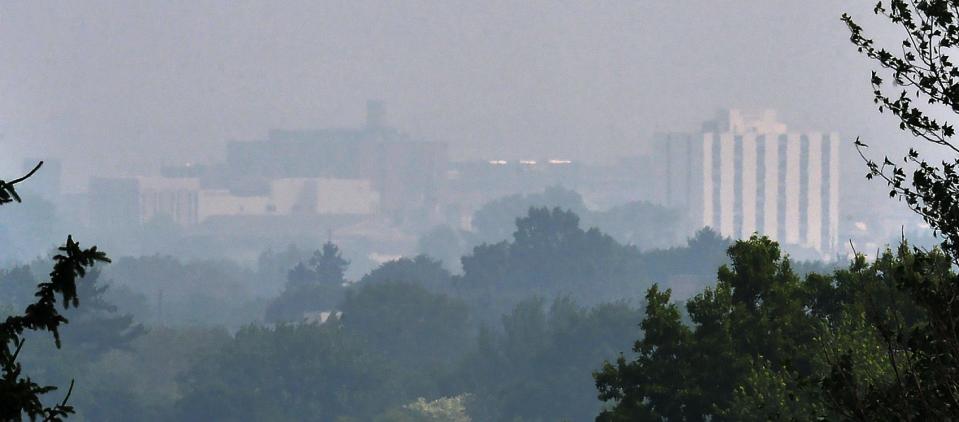Erie County is no longer an honor student when it comes to the American Lung Association’s annual State of the Air Report.
The county earned a C in the association’s 2024 report, published April 23, for both 24-hour particle (soot) and ozone pollution (smog). It had received an A for ozone pollution for the past three years and an A in 24-hour particle pollution since 2017.
You can blame the Canadian wildfires, which spread smoke and soot throughout the Great Lakes and Mid-Atlantic regions in June and July 2023.
From 2023: Summer of soot and sewage: Erie experiences air, beach water pollution problems
“The wildfires affected air quality for much of the northeastern United States, even into New England,” said Kevin Stewart, the association’s director of environmental health. “The American Lung Association was as surprised as anyone how significant the wildfires were.”
Erie County reported three high ozone pollution days and four high particle pollution days from 2021-23, the years covered in the 2024 report. All three high ozone days fell within the “orange” category, meaning they were unhealthy for sensitive groups such as those with lung diseases.
One of the county’s four high particle days also was within the “orange” category, while the other three days were in the “red” category, meaning the air was unhealthy even for people who didn’t have lung issues.

Buildings in downtown Erie, normally visible from West Grandview Boulevard, are shrouded in a smoky haze in this file photo taken June 28, 2023, during the Canadian wildfires.
All of the high particle days were reported between June 1-July 17, 2023. Erie County reported no high ozone or particle pollution days from 2018 to 2022.
“Both ozone and particle pollution can lead to premature death and cause serious health issues such as asthma attacks, heart attacks, strokes, preterm births and even problems with cognitive function later in life,” said Elizabeth Hensil, the association’s director of advocacy in Pennsylvania. “Particle pollution can also increase the risk of lung cancer.”
Erie-Meadville metro area no longer among nation’s cleanest
The Erie-Meadville metro area, which was listed in previous reports as among the cleanest U.S. cities for both ozone and particle pollution, saw its ranking drop. It was listed the 130th most polluted for ozone and 104th for particle pollution.
The report did not say how many metro areas were ranked. Erie and Meadville share a single monitoring device, which is located in Erie.

The Air Quality Index (AQI) is divided into six categories. Each category corresponds to a different level of health concern. Each category also has a specific color.
What grades did nearby counties receive?
Adjacent counties also saw their air quality grades decline in the latest report. Here is a look:
Ashtabula County, Ohio, earned a D for ozone pollution with nine days unhealthy for sensitive groups. It was not monitored for particle pollution.
Chautauqua County, New York, earned a D for ozone pollution, with nine days unhealthy for sensitive groups. It earned a B for 24-hour particle pollution with one day unhealthy for sensitive groups.
Crawford County did not receive any grades because it was not monitored.
Erie County received an incomplete grade for year-round particle pollution, meaning that data from its monitor was not available for all three years of the reporting period. Chautauqua County earned a passing grade, while Ashtabula County was not graded due to its lack of a monitor.
Contact David Bruce at dbruce@timesnews.com. Follow him on X @ETNBruce.
This article originally appeared on Erie Times-News: Canadian wildfires cause drop in Erie County’s grade on air quality
